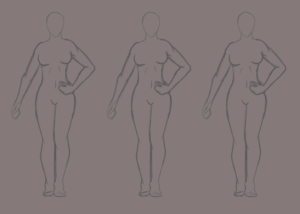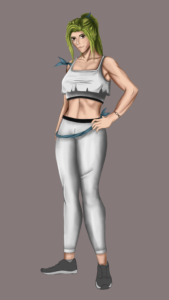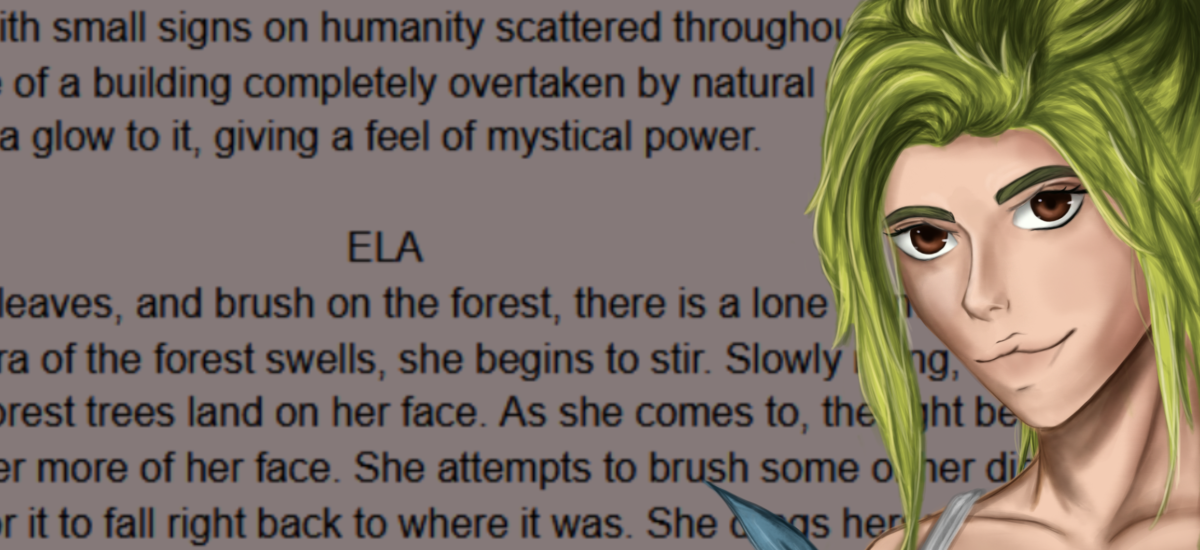Ian Haddow
Reintroducing Animation in the West
Abstract
Throughout the years, western 2D animation has been straying more and more towards both crude humor, and artwork. This has been causing a stigma to form about the art of animation within the west, which is one of fast-food fun that doesn’t hold much meaning. This problem is causing an entire form of artistic storytelling to die off within our culture, while comparatively to other cultures, the same form of storytelling is thriving. The way in which I wish to make a change is by showcasing what animation can be by writing and animating my own short story. I will also be documenting the process in which I conceptualize my characters and environments in order to give the viewer a better understanding of everything that goes into the process of animation.
The Problem
Take a look at a major western station aiming to produce animation aimed towards an older audience, and you’ll come to find that it’s more or less comprised of uninspired, crude, immature comedy shows. Let’s take a look at an Adult Swim show titled Mr. Pickles; which illustrates this point perfectly. The synopsis of this show is that there is a seemingly normal house-hold, but as you look on the inside you’ll see that their pet dog is Satan reincarnate and goes on violent a gory endeavors each episode. That is essentially the entire show, no character development or plot points, just a basic comedy where the joke is the same thing every episode. Very similar to Happy Tree Friends, a show that stopped airing in 2014; right around the time when Mr. Pickles began airing. On top of it all the art style is aiming to be ugly, and generally speaking the animation isn’t all that dynamic, although it does have a shot sprinkled in where the animation is high quality. (See the sunrise sequence of Mr. Pickles) So despite this show very brazenly being aimed towards an older audience, that doesn’t necessarily mean that it’s mature. This is becoming a popular mindset about animation, at least half of the mindset. To see the other side, we need to delve into the reason why such violent and crude shows were produced to begin with.
Animation in the west has another stigma surrounding it, and that is one of a more childish nature. As animation gained popularity through the years, it began to be aimed more and more towards a younger audience, which was apparent to the older audiences. As a response to this, over the top violent or crude shows. So it’s a constant back and forth of extremes within the medium, making it difficult to convince anyone of the general populous to even consider it as a serious art form.
The Solution
Despite the fact that we’ve had several subpar works of animation produced from the west, that doesn’t mean it’s all bad. A recent show geared towards adults, Rick and Morty, has managed to capture both a serious and comedic tone relatively well. However, it still has some issues such as the tone shifts being a bit too sharp at times, and of course the animation isn’t exactly nice to look at. This is still a decent example at how some western animation have been attempting to be more than nonsensical shock value humor. Yet it isn’t enough in the artistic sense.
The west is obsessed with running shows at a full 24 fps in order to make it look as smooth as possible, yet due to this, the range of motion a character can have an any given time is heavily limited. It seems to force animators to rely on vector animation, which is easier to produce work faster, reduces the artist input and movement options for both the background and the characters. So In order to really show the west the power that animation can hold, a high quality piece of work needs to be produced. A work where there’s a continuous story and that is brimming with visual storytelling, one that has fluid hand-drawn animation that all can appreciate.
I am aiming to create a story focused on character growth around a rather environmentalist message. Inspired by the Gilgamesh epic, our main character will be a modern day Enkidu fighting for the natural, and the main antagonist of the story will be inspired by Gilgamesh to an extent.
I’ll be going through a character design process for each character, the start of the process is to create a base and to throw some idea sketches on top.


After doing this process, I try to refine the sketch and make a full body render of the character, to really bring them to life and get a better feel for who they are. To further the idea of bringing them to life, generally a portrait will be painted of them as well.

Once the character has been fully designed, I go into the stages of adapting them into a character sheet for animation. This process is simplifying shapes and colors to allow for a more animation friendly design. I’ll be using Naohiro Shintani as inspiration for this section, as he has a mastery of how to create simplistic yet engaging animation sheets.

Another element that will be created by me will be the environments, and the tone they set, so of course concept art will be produced for these scenes as well. For example, the first scene will be of a rough looking hut in a heavily forested area, with a rather calming and almost mystical aura to it. To make sure I know exactly what I’m looking for, and to see what it looks like, I’ll be creating a piece of concept art for this scene. Of course there will be concept art for every major environment we’ll be encountering within the story.
Works Cited
Dumont, Jeff. “The Double-Edged Stigma Faced By Western Animation.” The Artifice, 27 Oct. 2017, the-artifice.com/stigma-western-animation/
Timeline
1. Research
a. General research
i. Study existing animations
ii. Study character based writing
iii. Examine how the industry works in the west
iv. History of the industry, and how we got to where we are
b. How to approach animation
i. Master studies of current and past prominent animators
ii. When designing characters and environment, utilize the student body and general audience to figure out how to continue.
iii. Storyboard the entire story and have filmographers critique angles
2. Capstone
a. Design
i. Design the characters with Photoshop
ii. Design the environment with Photoshop
iii. Test character design and environmental aesthetic on a varied group of people.
iv. Create in-universe logos and signage to make the environment feel more realistic with Illustrator
v. Create a promotional website detailing the process of designing for an animation with Sketch
b. Script Writing
i. Create a powerful script with engaging characters – Use previous legends as inspiration
ii. Test story on a varied group of people
c. Storyboarding and Animation
i. Draw and color the story boards for entire animation
ii. After testing storyboards on public, make adjustments and begin tweening
iii. Voice work will be introduced once storyboards are complete
iv. Add ambient noise and music
d. Small group showing
e. Final release
Needs
In order to create a full fledged animation with sound design and voice, I will require funding for several aspects. The major players being the software needed to create the animation, and the voice talent and musicians to bring the animation further to life. The current budget looks like:
Software:
Adobe Creative Cloud License for 6 Months: $317.94
Clip Studio Paint EX: $169.00
Sketch: $99.00
Outsourced Work:
Hire someone to create a soundtrack: $252.00
Voice Actors: $84.00
Total: $921.94

You must be logged in to post a comment.